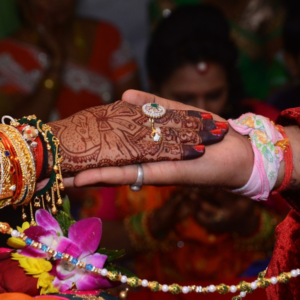Short Introduction to Gold Investment..!
In the world of investing, gold has long held a special place as a timeless asset offering stability and security. Whether you’re a seasoned investor or someone just beginning to explore investment opportunities, understanding the fundamentals of gold investment can be invaluable. In this article, we’ll delve into the basics of investing in gold, exploring its historical significance, its role in diversifying portfolios, and the various investment options available to you.
Gold has maintained its allure across the ages within the vast landscape of investment opportunities. From ancient civilizations to contemporary investors, the enduring appeal of this precious metal remains steadfast. Whether amidst economic uncertainty, political instability, or sought as a hedge against inflation, gold persists as a timeless asset class, providing investors with a sense of security and stability. In this article, we will explore the fundamentals of gold investment, delving into its historical significance, its role in diversifying portfolios, and the diverse avenues through which investors can engage with the gold market.

Table of Contents
The Historical Significance of Gold Investment
Gold’s prominence dates back thousands of years, with civilizations across the globe recognizing its value and utilizing it as a medium of exchange. From the Egyptians and Greeks to the Romans and beyond, gold has symbolized wealth, power, and prestige. Its scarcity, durability, and intrinsic beauty made it an ideal form of currency and a store of value. Even in today’s digital age, gold continues to hold a special place in the collective consciousness, representing stability and financial security.
Gold has been revered for centuries as a symbol of wealth, beauty, and prestige. As one of the oldest forms of currency and a sought-after investment asset, gold comes in various varieties and qualities, each with its own unique characteristics and investment potential. In this article, we’ll explore the different types of gold varieties and qualities available to investors, providing valuable insights into the world of gold investment.
Understanding Gold Varieties: Gold comes in a variety of forms, ranging from coins and bars to bullion and jewelry. One of the most popular forms of gold investment is physical gold, which includes gold coins, bars, and bullion. Gold coins, such as the American Eagle and the South African Krugerrand, are minted by government mints and often have legal tender status. Gold bars, on the other hand, are typically produced by private mints and come in various weights and purities. Gold bullion refers to gold in bulk form, usually in the form of bars or ingots, and is often used for large-scale investments or central bank reserves.
Exploring Gold Qualities: Gold purity is measured in karats, with 24 karat gold being the purest form of gold available. However, pure gold is too soft for practical use, so it is often alloyed with other metals to increase its strength and durability. Common gold alloys include 22 karat gold, which is 91.67% pure, and 18 karat gold, which is 75% pure. The purity of gold is an important factor to consider when investing in gold, as it can affect the value and marketability of the gold.
Investment Considerations: When investing in gold, there are several factors to consider, including liquidity, storage, and authenticity. Physical gold is highly liquid and can be easily bought and sold on the open market, making it an attractive investment option for many investors. However, storing and securing physical gold can be costly and may require additional insurance. Additionally, investors should be vigilant about ensuring the authenticity of their gold investments, as counterfeit gold coins and bars are a common problem in the industry.
Below is a structured table of gold investment varieties and qualities, categorized by year for easy reference:
| Year | Gold Investment Varieties | Gold Qualities |
|---|---|---|
| Pre-1933 | Gold Coins (e.g., Eagles, Sovereigns) | 90-91.67% purity, commonly known as “22 karat” |
| Gold Bars | Various weights and purities | |
| Gold Bullion | Varies based on source and minting | |
| 1933-1970 | Gold Certificates | Represented ownership of physical gold |
| Gold Coins (e.g., Krugerrands) | Typically 22 karat, varying weights | |
| Gold Jewelry | Varies in purity, commonly 14-18 karat | |
| 1971-1999 | Gold Futures Contracts | Agreements to buy or sell gold at a future date |
| Gold ETFs | Exchange-traded funds tracking gold prices | |
| Gold Bars and Coins | Various purities and weights | |
| 2000-Present | Gold Mining Stocks | Shares of companies engaged in gold extraction |
| Gold Sovereigns | Minted by various countries, varying purities | |
| Gold Bullion Coins | Government-issued coins, typically 99.99% pure | |
| Future | Gold-backed Cryptocurrencies | Digital assets backed by physical gold |
| Gold Nanoparticles | Utilized in various industries and technologies | |
| Gold-backed Loans | Loans secured by physical gold collateral |
The Role of Gold Investment in a Diversified Portfolio
In modern investment portfolios, diversification is key to managing risk and maximizing returns. Gold plays a crucial role in this strategy by acting as a hedge against volatility and uncertainty in other asset classes. Unlike stocks, bonds, or real estate, gold often moves independently of traditional financial markets, making it an effective diversifier. During times of economic turmoil or market downturns, gold investment tends to retain its value or even appreciate, providing a buffer against losses in other investments.
Moreover, gold has historically exhibited a negative correlation with equities, meaning that when stock prices fall, the price of gold tends to rise, and vice versa. This inverse relationship can help reduce overall portfolio volatility and enhance risk-adjusted returns. As such, financial advisors often recommend allocating a portion of one’s investment portfolio to gold investment to improve diversification and mitigate downside risk.
Gold Investment : A Variety of Options
Investors have several options when it comes to gaining exposure to the gold investment market, each with its own advantages and considerations:
Physical Gold: Owning physical gold in the form of coins, bars, or bullion offers tangible benefits. It provides a sense of security and control over one’s investment, free from the risks associated with financial intermediaries. However, storing and insuring physical gold can incur additional costs, and liquidity may be limited.

Gold Exchange-Traded Funds (ETFs): Gold ETFs are investment funds that track the price of gold and are traded on stock exchanges like any other security. Investing in gold ETFs offers liquidity, low costs, and the ability to buy and sell shares easily. Additionally, investors are relieved of the logistical challenges of storing and safeguarding physical gold.
Gold Mining Stocks: Another way to invest in gold is through mining companies that extract and produce the metal. Investing in gold mining stocks offers exposure to the potential upside of gold prices as well as the operational performance of individual mining companies. However, mining stocks are subject to company-specific risks, such as production costs, geopolitical factors, and regulatory issues.
Gold Futures and Options: For more experienced investors seeking leveraged exposure to gold, futures and options contracts provide speculative opportunities. However, trading derivatives requires a thorough understanding of market dynamics and entails significant risks, including the potential for substantial losses.
Factors Influencing Gold Investment Prices
The price of gold is influenced by a myriad of factors, including:
Geopolitical Uncertainty: In the realm of investment in gold, geopolitical instability, conflicts, and tensions hold significant sway. Events such as wars, trade disputes, or geopolitical crises can trigger a surge in demand for gold as investors seek refuge in this safe haven asset. Consequently, such instances often propel gold prices upward, reflecting the heightened demand amidst geopolitical uncertainties.
Central Bank Policies: Central banks wield considerable influence over the gold market through their policies and reserves. Alterations in interest rates, quantitative easing measures, or adjustments in reserve asset allocations can exert profound effects on gold prices. These policy shifts signal broader economic changes, prompting investors to adjust their investment strategies in gold accordingly.
Market Sentiment: Investment in gold is also heavily influenced by investor sentiment and market perceptions of risk. Fear, uncertainty, and speculation can precipitate short-term fluctuations in the gold market, irrespective of underlying fundamentals. As investors react to changing market dynamics and sentiment, these fluctuations in market sentiment can significantly impact investment decisions in gold.
Investing in Gold: Exploring Options and Considerations
Investment in gold offers a diverse array of options, each with its own set of advantages and considerations. One prevalent approach is acquiring physical gold in the form of coins, bars, or bullion. This method affords investors tangible ownership of the precious metal, instilling a sense of security and control over their investment. However, considerations must be given to associated costs of storage and insurance, as well as potential liquidity constraints. Additionally, authentication procedures are imperative to ensure the purity and authenticity of purchased physical gold, adding complexity to the investment process.
Another avenue for investment in gold is through Gold Exchange-Traded Funds (ETFs). These investment funds, traded on stock exchanges, track gold prices and offer liquidity, low costs, and ease of transaction. Investors can seamlessly buy and sell shares of gold ETFs without the logistical challenges of physical storage. Furthermore, gold ETFs provide exposure to gold price movements without necessitating direct ownership, making them a convenient option for portfolio diversification.
For investors seeking exposure to potential gains from gold price increases and the operational performance of mining companies, investing in gold mining stocks presents an alternative avenue. By purchasing shares of gold mining companies, investors gain indirect exposure to the gold market while benefiting from company-specific factors such as production costs and exploration success. However, it’s crucial to acknowledge the inherent risks associated with investing in gold mining stocks, including geopolitical factors, regulatory issues, and operational challenges specific to the mining industry. Thorough research and due diligence are imperative before making investment decisions in this sector.
In a world characterized by uncertainty, gold shines as a beacon of stability and security, offering investors a timeless refuge amidst turbulent times.





